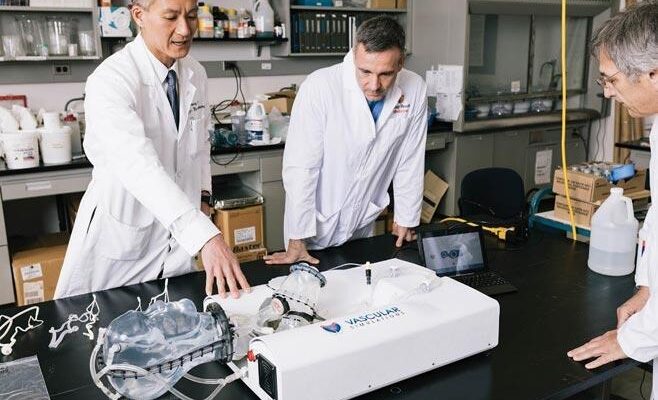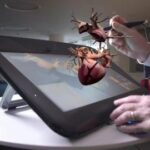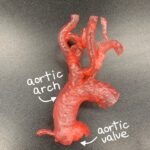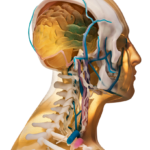

Nothing poses a greater threat to the livelihood of the human body than cardiovascular disease, which, according to the American Heart Association, is the leading global cause of death, accounting for over 17.3 million deaths per year. Prior to recent medical innovations, traditional treatment was considered invasive and quite risky, but new and improved operational options have opened up thanks in part to 3D printing technology. One Stony Brook, New York-based medical company, called Vascular Simulations, has been utilizing additive manufacturing technology provided by the established 3D printing solutions company Stratasys, looking to enhance the training and treatment methods for dealing with cardiovascular disease.
Founded in 2011, Vascular Simulations was started by a multi-disciplinary team consisting of physicians, researchers, biomedical and mechanical engineers, and entrepreneurs. They ultimately integrated 3D printing technology into their business model, which has helped surgeons both learn and teach advanced endovascular techniques through 3D printed models that assimilate certain disease and patient-specific scenarios. To create these personalized 3D models, Vascular Simulations has relied on FDM 3D printing technology from Stratasys, which has greatly assisted with patient care and surgical training.
The medical company’s Vascular Simulations Replicator training simulation provides surgeons with extremely realistic conditions to help prepare for endovascular procedures. The Replicator features a functional left atrium and ventricle, fluid mechanics that mimic blood flow, a silicone aorta, as well as physiologic parameters and a heating system, which help integrate real-life conditions within the replicated vascular model. 3D printed vascular models have been used by prestigious establishments in the past, such as the Jacobs Institute and researchers from Harvard, but these models have yet to reach the realistic conditions that Vascular Simulations has achieved with the help of Stratasys.

To create these initial 3D printed models, Vascular Simulations first takes imaging data from CT scans or MRIs, which is converted to a 3D model using a 3D medical image processing software. Once these models are trimmed and modified to meet patient-specific conditions, the final model is 3D printed with a Stratasys Dimension Elite 3D Printer. Then, after the surface is smoothed to rid the 3D printed model of imperfections, a coat of silicone is applied. Once the ABS model is dissolved away, only the silicone version of the model remains. The silicone vessels are then used in conjunction with the Vascular Simulations Replicator, creating a final product that effectively replicates the real-life properties of the body’s vessels much better than a strictly 3D printed model would. This advanced process that took Vascular Simulations about five years to fully develop.
By utilizing 3D printing solutions, these silicone-based vessel models can be designed and manufactured to replicate almost any blood vessel, directly and accurately prototyped from the actual patient in question. The ability to replicate the anatomy of a diseased patient is what makes this process superior to other traditional training models. The Replicator system has already been utilized to treat patients by Vascular Simulations CEO Dr. Henry Woo, who is also a practicing endovascular neurosurgeon at Stony Brook University Hospital. A case study was recently published by Vascular Simulations detailing their 3D print-driven technique, which was utilized by Dr. Woo and his colleagues to help save a patient from an extremely dangerous brain aneurysm.
This hands-on training method has proven to be much more efficient than virtual training, as 3D printing technology allows the Vascular Simulations team to examine even the most intricate and tortuous vessels in the brain. By implementing these custom-made silicone vessels into their Replicator system, the physicians are better able to educate and train themselves for various endovascular procedures. Thanks to the 3D printing technology provided by Stratasys, surgeons and physicians affiliated with Vascular Simulations are now able to prepare themselves with a realistic surgical experience, enabling them to be quicker and more effective once the time comes to treat an actual patient. Discuss these new developments over in the 3D Printed Blood Vessels forum at 3DPB.com.
[Source: Stratasys]
When it comes to 3D real estate visualization in the USA, our service provides the perfect solution for bringing property listings to life. Through our platform, you can easily access cutting-edge 3D renderings that showcase your real estate projects in a way that attracts potential buyers and investors. Whether it's residential, commercial, or mixed-use properties, our team of experts uses advanced technology to create immersive visualizations that highlight the best features of your property, making it easier for clients to imagine the space as their own.
Through our website, you can quickly get high-quality 3D real estate visualizations that are tailored to your specific needs. With our help, you'll stand out in the competitive real estate market by offering potential buyers a realistic, interactive view of your property. Our efficient process ensures a fast turnaround time, while our attention to detail guarantees that every aspect of the property is represented accurately, giving you a powerful marketing tool to promote your real estate listings.






